This pressure canned spaghetti sauce is the one I make every single year. It’s ready right out of the jar with plenty of seasoning, lots of real tomato flavor, and just the right balance of herbs. If you’re looking for a sauce that’s safe to pressure can and way, way better than store-bought, let’s do this.
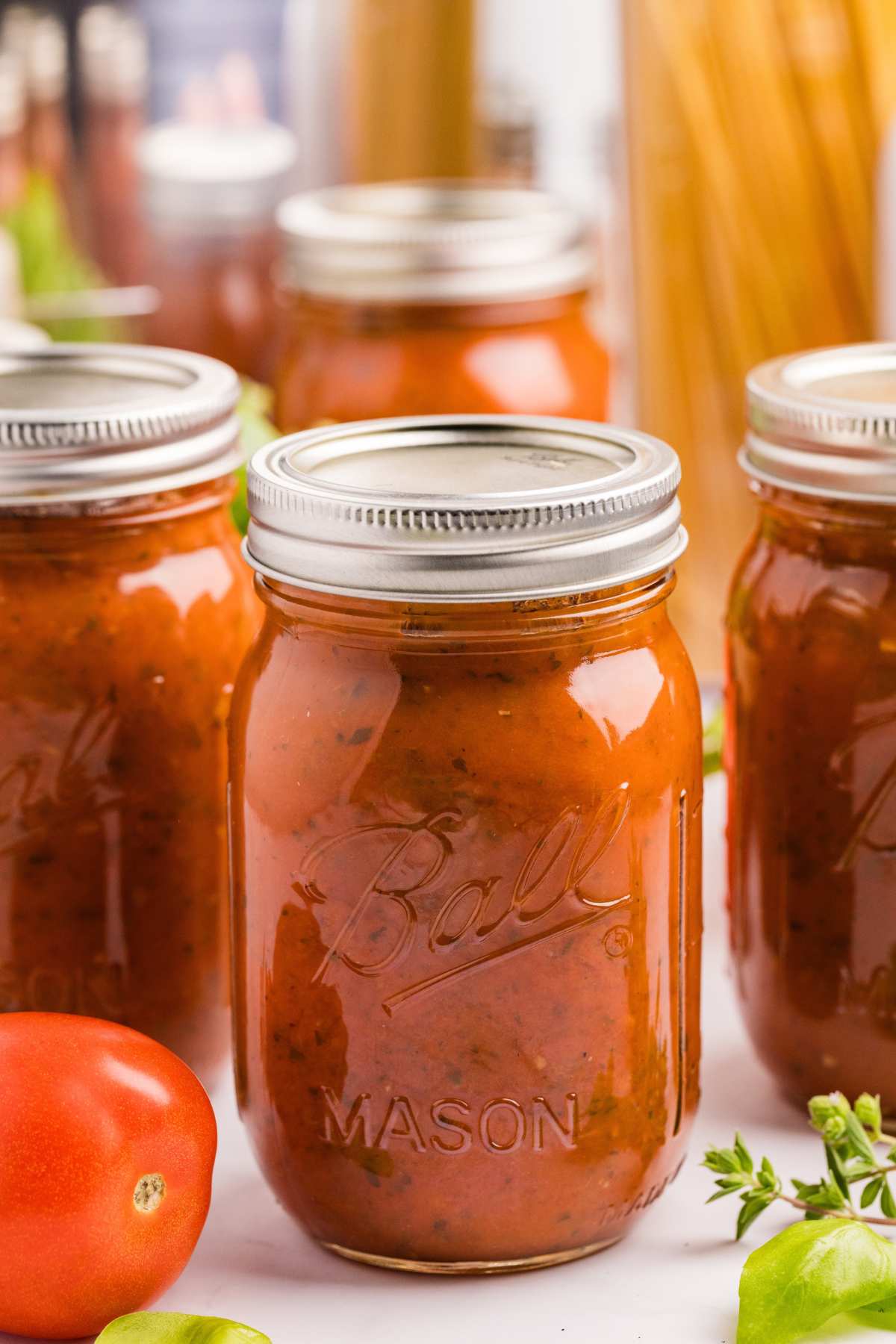
This sauce is so much better than anything you find in the store. And if you grow your own tomatoes, it’s much cheaper! I use this spaghetti sauce when I want a cozy meal or for those nights when I don’t have time to cook.
I love it. My husband loves it. My kids even love it! I think you will, too. 😊 Pressure canning can seem intimidating, but I’ll walk you through every step.
Table of Contents
Ingredients and Tools You’ll Need
A pressure canner and bottled lemon juice are important for canning this safely. If you can, use Roma or San Marzano tomatoes. They are best for canning and sauces because they have fewer seeds and thicker flesh. They will give you a richer, less watery sauce.

FREE FOR SUBSCRIBERS
Canning Binder
Subscribe (free!) to my newsletter to receive this PDF + dozens of others in my printable library. You’ll also get emails you’ll truly love, with a weekly meal and so much more.
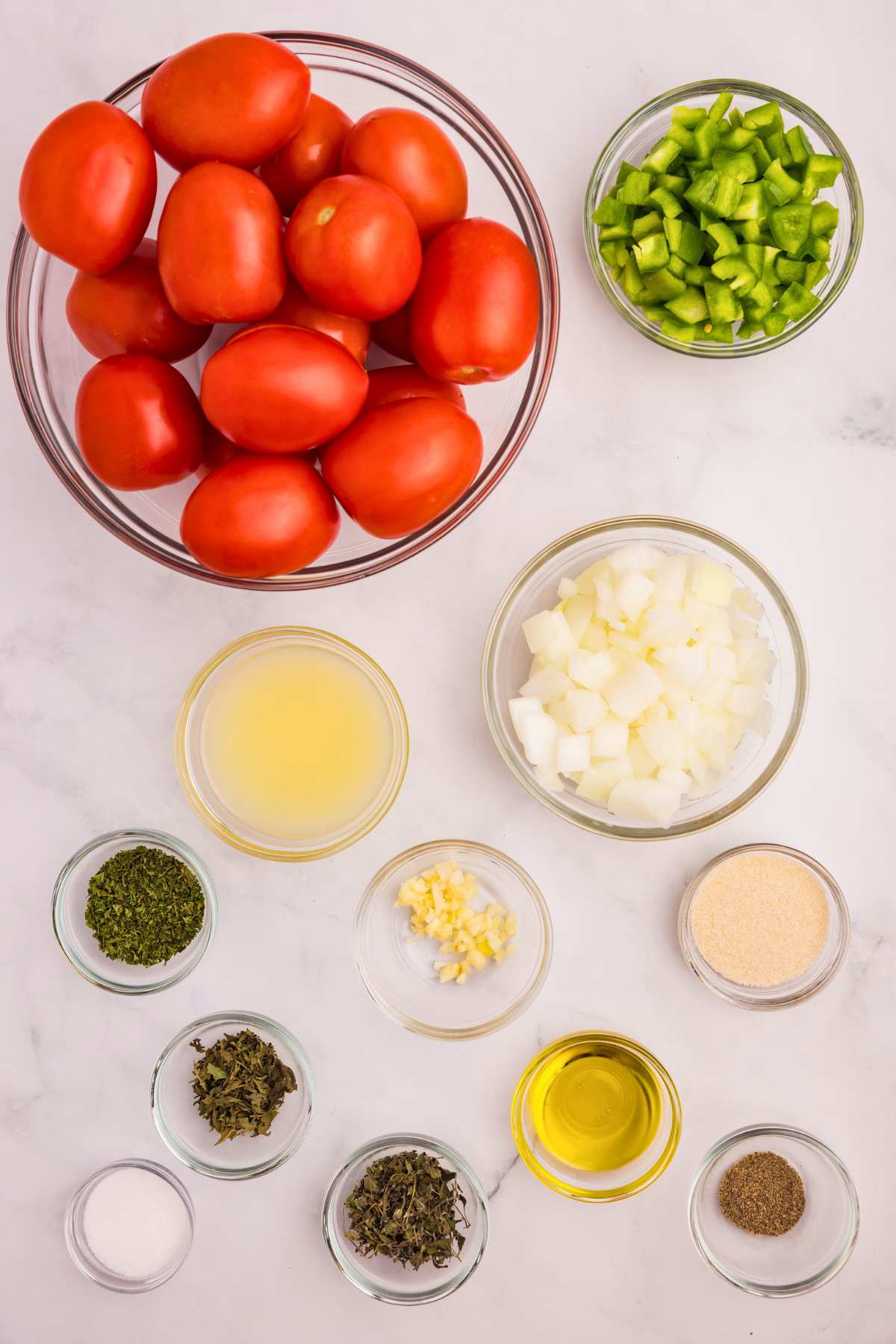
Equipment
- Pressure canner (do not use a waterbath canner)
- Food mill (optional)
Ingredients
- 10 pounds tomatoes (or 16 cups of tomato sauce; use Roma or San Marzano)
- 2 tablespoons olive oil
- 1 cup yellow onion (1 medium chopped)
- 2 cloves garlic (finely chopped)
- 1 cup green bell pepper (about 1 medium)
- 2 ¼ teaspoons salt
- 1 tablespoon dried oregano
- 1 tablespoon dried basil
- 2 tablespoons dried parsley
- 1 teaspoon black pepper
- 2 tablespoons sugar (optional)
- 5 tablespoons bottled lemon juice (do not use fresh)
How to Make
Follow the instructions for your specific canner model and double-check the pressure gauge throughout the process. Also, check out my pressure canning tips for beginners.
Step One: Process Tomatoes
You can do this with a food mill or by hand. If doing this by hand, slice an X at the bottom of the tomatoes. Place them in boiling water and boil for 1 minute. Transfer to an ice water bath.

Step Two: Blend Tomatoes Into Sauce
The skin should peel right off. Next, cut the tomatoes into quarters and remove the inner membrane and seeds. Transfer the tomatoes to a blender and blend until smooth.

Step Three: Cook The Tomato Sauce
Transfer the tomatoes to a large pot and bring to a boil. Once boiling, reduce the heat so the tomatoes turn to a slow boil. Cook for 2 hours uncovered or until they have reduced by half and thickened.

Step Four: Prepare For Canning
Wash the jars in hot, soapy water. Transfer them to your pressure canner. Fill the pressure canner to the fill line while filling the jars halfway with water. Place over medium-high heat to bring the jars up to temperature. Place your lids and rings in a pot of water over medium-low heat. Do not boil.

Step Five: Remove The Tomato Sauce
Once the tomatoes have cooked down, transfer them to a bowl and set aside. (You can also leave them in this pot and use a different large pot for the next step.)
Step Six: Saute
Add oil to the pot and add the onions, garlic, and bell peppers. Saute until soft.

Step Seven: Add Tomato Sauce
Add the tomatoes back to the pot. Stir to combine.

Step Eight: Add Seasonings
Next, add the salt, oregano, parsley, basil, pepper, and sugar (if using). Stir to combine.

Step Nine: Simmer
Bring to a boil and simmer uncovered for about 10 minutes.

Step Ten: Fill Jars
Transfer the hot jars to a heat-safe area. Working with one jar at a time, topped with a canning funnel, add 1 tablespoon of the lemon juice to each jar. Fill the jars with spaghetti sauce, leaving a 1-inch headspace. Using a de-bubbler, remove any bubbles, refilling the jars so they maintain a 1-inch headspace.

Step Eleven: Secure Jars
Wipe the rims with a clean, damp cloth. Add the lids and rings.

Step Twelve: Process Jars In Canner
Transfer the jars to the pressure canner and secure the lid. Place the canner over medium-high heat and allow the steam to vent for 10 minutes. Once the canner has vented steam for 10 minutes, set the dial or add weight to 10 pounds (adjusting for elevation). Bring the pressure up to 11 pounds for the gauge canner or 10 pounds for the weighted canner. Process for 20 minutes for pints. Keep an eye on the gauge to ensure consistent pressure during the process time. If the pressure drops below the recommended pressure, stop the timer, increase the pressure, and start the timer again.

Step Thirteen: Remove From Heat And Vent Steam
After the processing time is finished, remove the canner from the heat and allow the pressure to release naturally. Once the steam stops venting, remove the weights or set your dial to 0 and allow it to release the rest of the pressure. After the steam has fully vented, wait 5 minutes, then carefully remove the lid and tilt it away from your face. Allow the jars to sit for 5 minutes.
Step Fourteen: Cool Jars, Check Seals, Store
Transfer the jars to a heat-safe area and allow them to cool for 12-24 hours. Check for a proper seal. Once a proper seal has been confirmed, remove the rings, label them, and store them in a cool, dry area for 12-18 months.

Serving & Storing Your Canned Spaghetti Sauce
Once your jars have cooled completely and you’ve checked the seals, remove the rings from the jars (this helps you spot any leaks or seal failures more easily).
Store in a cool, dark, dry place like a pantry or basement shelf. Properly stored, your sauce should last 12-18 months.
Serve with spaghetti (obviously!) or any pasta noodles. It’s got plenty of flavor all on its own. It’s also a great base for my simple beef pasta skillet, rigatoni al forno, or lasagna.
Questions and Troubleshooting
The high acidity of the tomatoes makes them safe to waterbath most types of tomato products, including spaghetti sauce. However, adding onions, peppers, and spices slightly lowers the acidity, making it unsafe to waterbath can.
It’s possible. Dial gauge canners sometimes require slightly different pressure settings than weighted gauge canners. Always refer to your canner’s instruction manual for specific recommendations. And remember, adjusting for altitude is essential for safe canning, so check those guidelines, too!
Hmm, a few things could cause that. First, did you use paste tomatoes? They have less water content, so they make a thicker sauce. If you used a different kind of tomato, you might need to cook the sauce down a bit longer to reduce the liquid. Also, make sure you let the tomatoes cook down for the full two hours at the beginning. That helps concentrate the flavors and thicken things up.
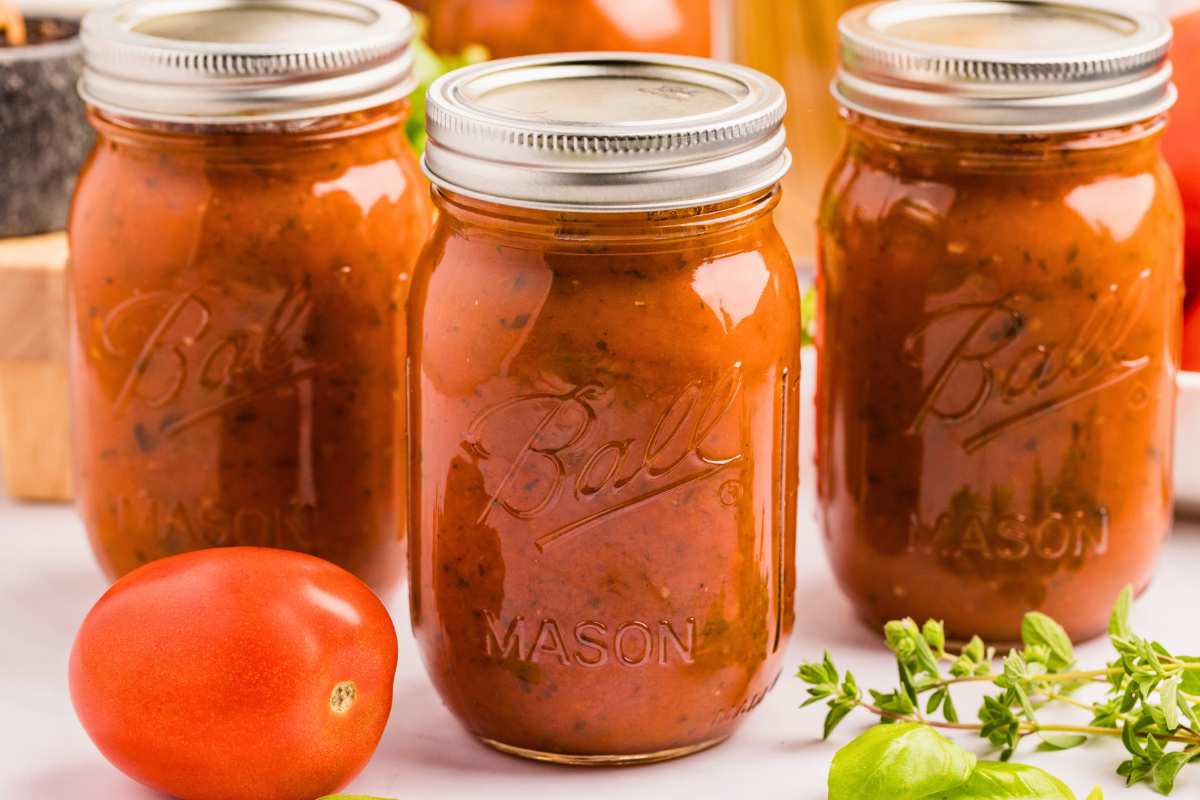
More Pressure Canning Recipes
- Pressure canned potatoes are a great way to keep potatoes from the garden fresh all year.
- Have some fresh black bean and corn salsa ready for any get-together.
- This pressure canned green beans recipe is a great side dish to pull out on a busy night.
Printable Recipe
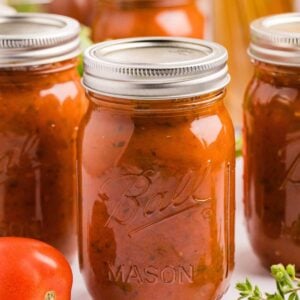
Pressure Canned Spaghetti Sauce
Equipment
- Food mill (optional)
Ingredients
- 10 pounds tomatoes (or 16 cups tomato sauce)
- 2 tablespoons olive oil
- 1 cup yellow onion (1 medium chopped)
- 2 cloves garlic (finely chopped)
- 1 cup green bell pepper (about 1 medium)
- 2 ¼ teaspoons salt
- 1 tablespoon dried oregano
- 1 tablespoon dried basil
- 2 tablespoons dried parsley
- 1 teaspoons black pepper
- 2 tablespoons sugar (optional)
- 5 tablespoons bottled lemon juice
Save This Recipe
You'll join my email list which you will love. And if you don't, unsubscribe in one click. ❤️
Instructions
- Process tomatoes. You can do this with a food mill or by hand. If doing this by hand, slice an X at the bottom of the tomatoes. Place them in boiling water and boil for 1 minute. Transfer to an ice water bath.
- Blend tomatoes into sauce. The skin should peel right off. Next, cut the tomatoes into quarters and remove the inner membrane and seeds. Transfer the tomatoes to a blender and blend until smooth.
- Cook the tomato sauce. Transfer the tomatoes to a large pot and bring to a boil. Once boiling, reduce the heat so the tomatoes turn to a slow boil. Cook for 2 hours uncovered or until they have reduced by half and thickened.
- Prepare for canning. Wash the jars in hot, soapy water. Transfer them to your pressure canner. Fill the pressure canner to the fill line while filling the jars halfway with water. Place over medium-high heat to bring the jars up to temperature. Place your lids and rings in a pot of water over medium-low heat. Do not boil.
- Remove the tomato sauce. Once the tomatoes have cooked down, transfer them to a bowl and set aside. (You can also leave them in this pot and use a different large pot for the next step.)
- Saute. Add oil to the pot and add the onions, garlic, and bell peppers. Saute until soft.
- Add tomato sauce. Add the tomatoes back to the pot. Stir to combine.
- Add seasonings. Next, add the salt, oregano, parsley, basil, pepper, and sugar (if using). Stir to combine.
- Simmer. Bring to a boil and simmer uncovered for about 10 minutes.
- Fill jars. Transfer the hot jars to a heat-safe area. Working with one jar at a time, topped with a canning funnel, add 1 tablespoon of the lemon juice to each jar. Fill the jars with spaghetti sauce, leaving a 1-inch headspace. Using a de-bubbler, remove any bubbles, refilling the jars so they maintain a 1-inch headspace.
- Secure jars. Wipe the rims with a clean, damp cloth. Add the lids and rings.
- Process jars in canner. Transfer the jars to the pressure canner and secure the lid. Place the canner over medium-high heat and allow the steam to vent for 10 minutes. Once the canner has vented steam for 10 minutes, set the dial or add weight to 10 pounds (adjusting for elevation). Bring the pressure up to 11 pounds for the gauge canner or 10 pounds for the weighted canner. Process for 20 minutes for pints. Keep an eye on the gauge to ensure consistent pressure during the process time. If the pressure drops below the recommended pressure, stop the timer, increase the pressure, and start the timer again.
- Remove from heat and vent steam. After the processing time is finished, remove the canner from the heat and allow the pressure to release naturally. Once the steam stops venting, remove the weights or set your dial to 0 and allow it to release the rest of the pressure. After the steam has fully vented, wait 5 minutes, then carefully remove the lid and tilt it away from your face. Allow the jars to sit for 5 minutes.
- Cool jars, check seals, store. Transfer the jars to a heat-safe area and allow them to cool for 12-24 hours. Check for a proper seal. Once a proper seal has been confirmed, remove the rings, label them, and store them in a cool, dry area for 12-18 months.
Notes
Nutrition


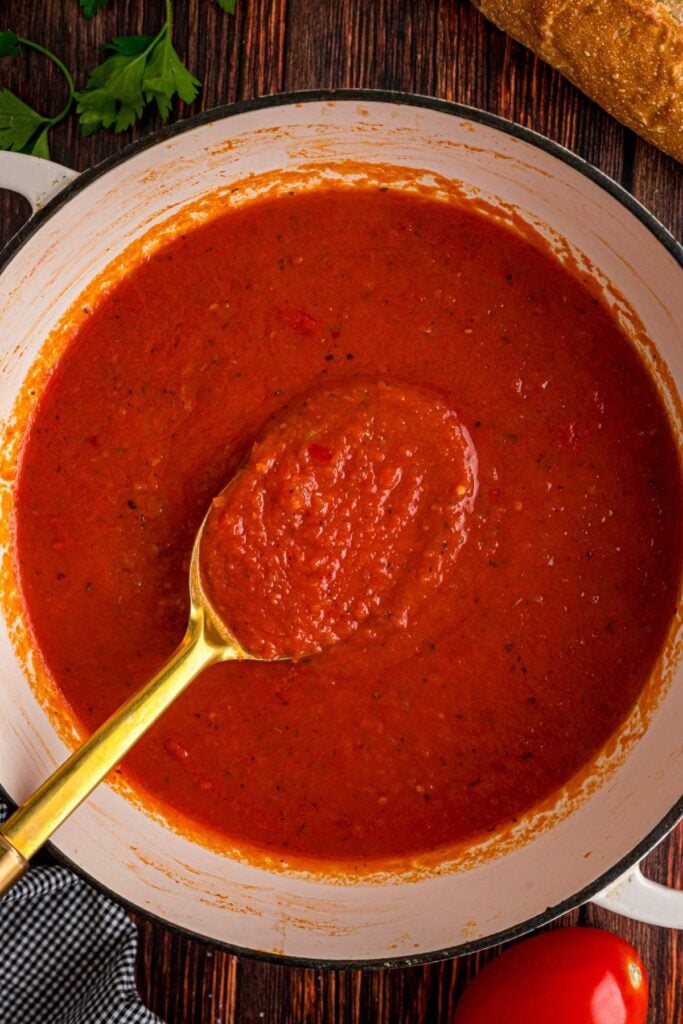

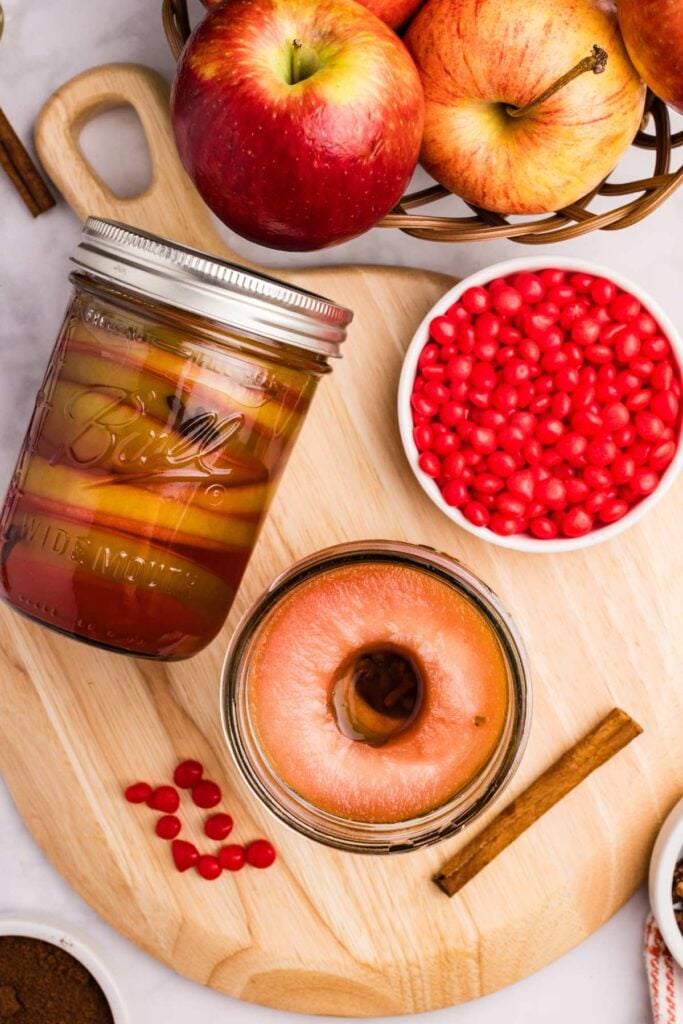
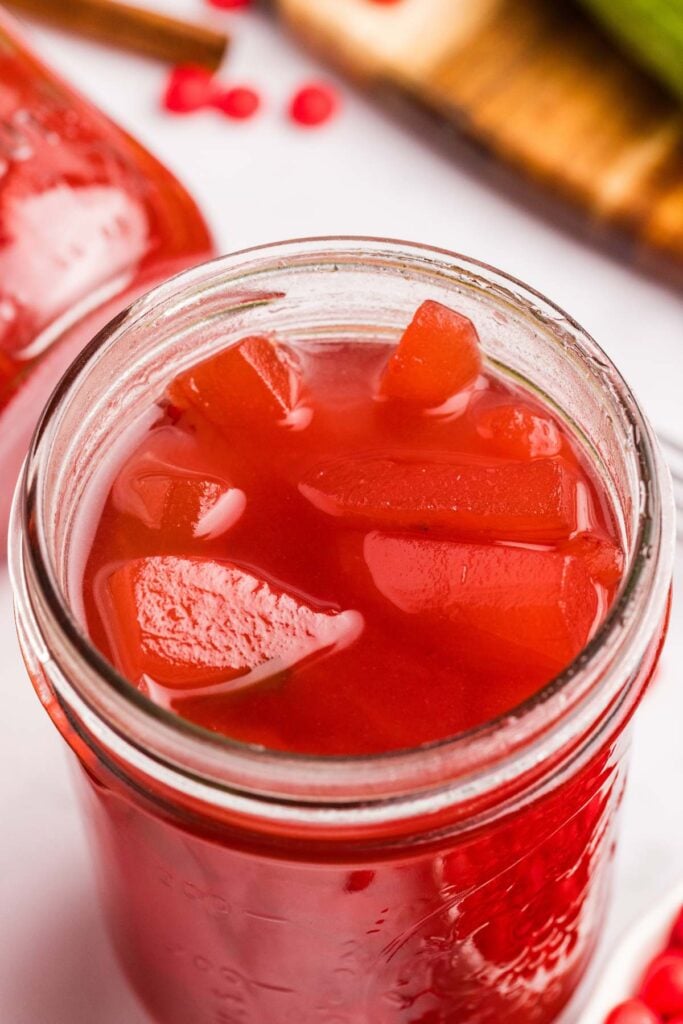
This looks delicious. Can I safely can it if I remove the skin but not the seeds? And can I blend it after adding the other vegetables so it isn’t chunky?
Thank you!
yes, absolutely!
I am planning to can this weekend. Can you use a food processor instead of a blender? I am new to this and am not sure what you mean by removing the inner membrane and seeds. I an using roma and pixel tomatoes, so not much of a middle to them.
I just sort of pull out the middle “core” and that will get rid of a lot of the water and seeds. a food mill is REALLY best for any time of sauce, makes a world of difference and gives you a really professional result. you CAN use a food processor but it have the texture similar to when you cook down whole tomatoes, if that makes sense. if you grow lots of tomatoes a food mill is a great investment.
I am making this later in the week. How long do I process quarts of sauce?
25 minutes, but you won’t have 3 full quarts.